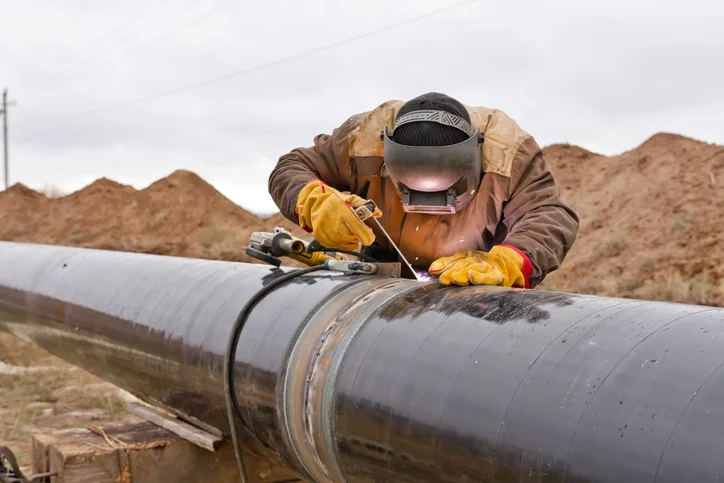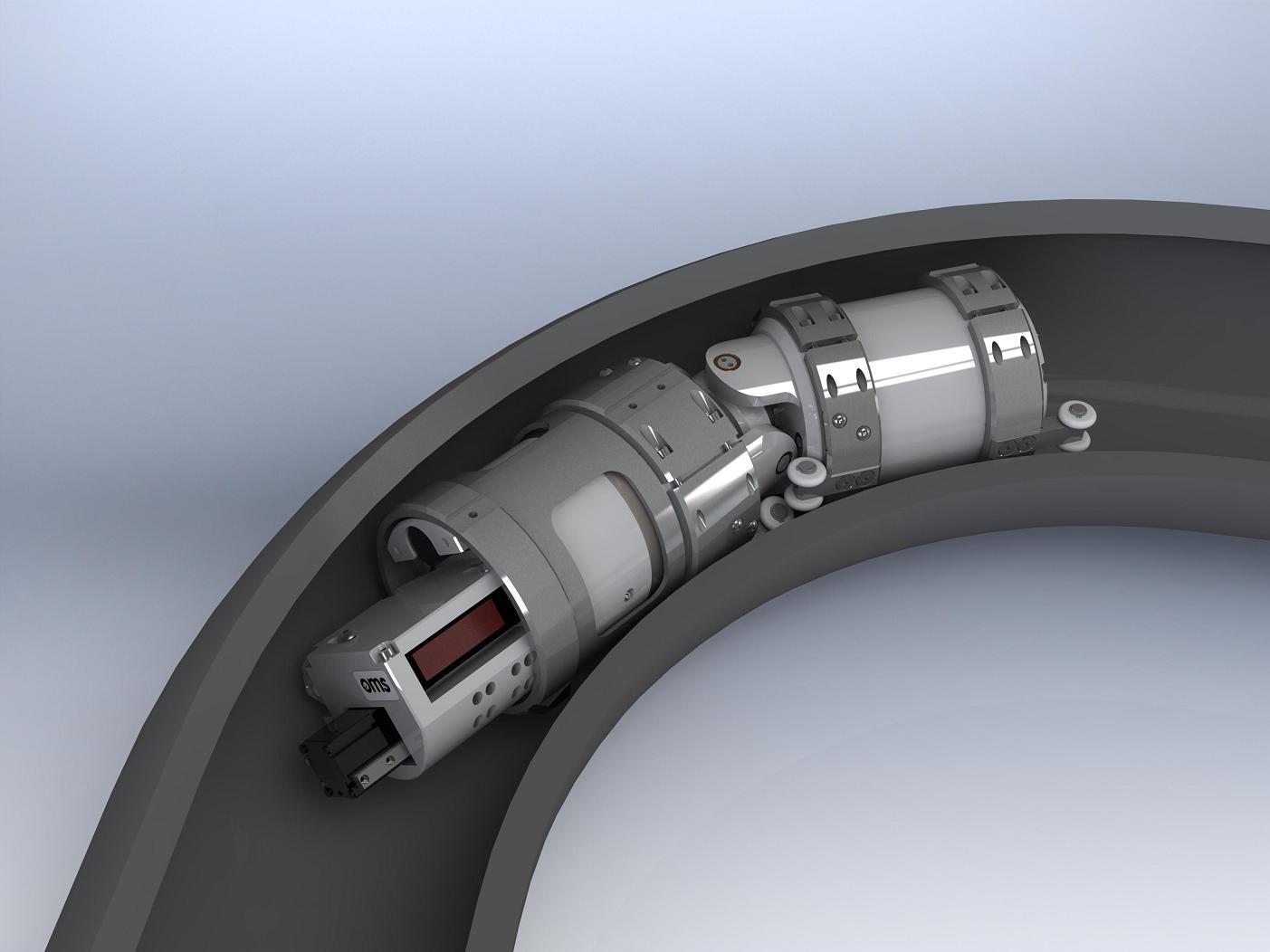Protect Your Investment: Thorough Pipeline Welding Inspection for Assurance
Protect Your Investment: Thorough Pipeline Welding Inspection for Assurance
Blog Article
Comprehensive Introduction of Pipe Welding Inspection Treatments
In the realm of pipe construction, ensuring the stability and safety and security of welded joints is paramount. Pipe welding evaluation treatments play an essential function in guaranteeing that bonded connections meet rigorous sector requirements and specifications. From meticulous pre-welding examinations to thorough post-weld assessments, a well-defined examination process is important for keeping the structural sturdiness of pipelines. Recognizing the intricacies of welding assessment procedures is not only a regulatory demand yet additionally a fundamental aspect of promoting the reliability of these important frameworks.
Pre-welding Evaluation Preparations
Prior to commencing the welding procedure, detailed pre-welding assessment prep work are necessary to guarantee the honesty and top quality of the weld joint. These prep work entail a precise exam of the products to be welded, the welding tools, and the job environment. Firstly, the materials have to be evaluated for any kind of flaws, impurities, or inconsistencies that could jeopardize the weld. This includes monitoring for proper material grades, measurements, and surface area conditions. Pipeline Welding Inspection. In addition, the welding tools needs to be inspected to verify that it remains in good functioning condition, calibrated correctly, and ideal for the details welding process. Any type of problems with the tools need to be resolved promptly to stop defects in the weld. Last but not least, the workplace should be evaluated for tidiness, appropriate ventilation, and safety and security measures to make sure a favorable setup for the welding operation. By conducting complete pre-welding examination prep work, possible problems can be identified and solved at an early stage, causing high-quality and reputable weld joints.
Welding Procedure Qualification
Detailed pre-welding assessment prep work lay the foundation for the vital process of Welding Treatment Qualification, making certain the integrity and top quality of the weld joint. Welding Treatment Qualification (WPQ) is a crucial action in the welding procedure that includes testing and licensing welding treatments to ensure they fulfill particular criteria and demands. The WPQ procedure normally consists of welding treatment specification growth, welding treatment certification screening, and documentation of the outcomes.
During welding procedure requirements development, vital information such as the welding process, welding products, joint layout, and welding parameters are defined to develop a comprehensive treatment. Subsequently, welding procedure certification screening is performed to verify the suggested treatment's stability. This screening frequently entails welding test coupons that undergo numerous mechanical and non-destructive tests to evaluate the weld's quality and adherence to the specified requirements.
In-process Weld Examination
Throughout the welding procedure, in-process weld inspection plays a critical role in making sure the high quality and honesty of the weld joint - Pipeline Welding Inspection. This kind of assessment entails checking the welding specifications, evaluating the weld bead formation, and finding any kind of prospective flaws or stoppages as they take place. By conducting in-process weld evaluations, welding operators can promptly address any concerns that might emerge, therefore protecting against more flaws and making sure that the final weld meets the called for specifications
Typical methods made use of for in-process weld examination include visual evaluation, liquid penetrant testing, magnetic fragment testing, ultrasonic screening, and radiographic screening. Visual evaluation is frequently the primary step in the procedure, permitting examiners to aesthetically examine the weld for surface abnormalities such as fractures, porosity, or incomplete fusion. Advanced methods like ultrasonic screening and radiographic testing provide thorough insights right into the internal framework of the weld, making sure that there are no concealed problems that can jeopardize the weld joint's toughness and stability. Overall, in-process weld examination is vital for preserving the top quality and dependability of welded pipes.
Non-destructive Screening (NDT)
Non-destructive Testing (NDT) is an important technique utilized in pipe welding evaluation to examine the stability of click for info weld joints without causing damage to the bonded structure. By making use of different NDT methods, inspectors can evaluate the top quality of welds and determine any issues or stoppages that may jeopardize the architectural soundness of the pipe. Usual NDT techniques used in pipeline welding assessment consist of Radiographic Screening (RT), Ultrasonic Screening (UT), Magnetic Bit Testing (MPT), Liquid Penetrant Testing (LPT), and Visual Testing (VT)
RT entails the use of X-rays or gamma rays to produce images click over here of the inner framework of the weld, enabling inspectors to find defects such as porosity, cracks, or insufficient combination. Additionally, VT entails visual assessment of welds to determine any noticeable imperfections.
Post-weld Inspection and Documents


Paperwork of post-weld inspection findings is necessary for preserving top quality control records and ensuring conformity with sector requirements and regulations. In-depth reports must include info concerning the assessment techniques made use of, the location and nature of any kind of defects located, and any restorative activities taken - Pipeline Welding Inspection. Correct documentation not just functions as a record of the weld's high quality however also aids in future upkeep and inspection processes
Verdict

In final thought, pipe welding evaluation treatments play an important duty in making certain the high quality and integrity of welds. From pre-welding assessments to post-weld documents, each step is necessary in maintaining the security and efficiency of pipelines. By complying with well-known procedures and carrying out detailed evaluations, possible defects can be determined and resolved prior to they lead to pricey repair services or failings. In general, adherence to appropriate assessment methods is key to website here the success of pipeline welding jobs.
From meticulous pre-welding evaluations to extensive post-weld evaluations, a well-defined assessment procedure is necessary for preserving the structural stability of pipelines. By carrying out in-process weld assessments, welding operators can quickly deal with any concerns that might emerge, thus making sure and protecting against further issues that the last weld satisfies the called for specifications.
Typical methods utilized for in-process weld inspection include visual inspection, liquid penetrant testing, magnetic fragment testing, ultrasonic testing, and radiographic screening.Non-destructive Testing (NDT) is an important technique used in pipe welding evaluation to evaluate the honesty of weld joints without causing damage to the welded structure. Post-weld evaluation entails numerous approaches to examine the welds for defects, including aesthetic assessment, color penetrant screening, magnetic bit screening, ultrasonic screening, and radiographic screening.
Report this page